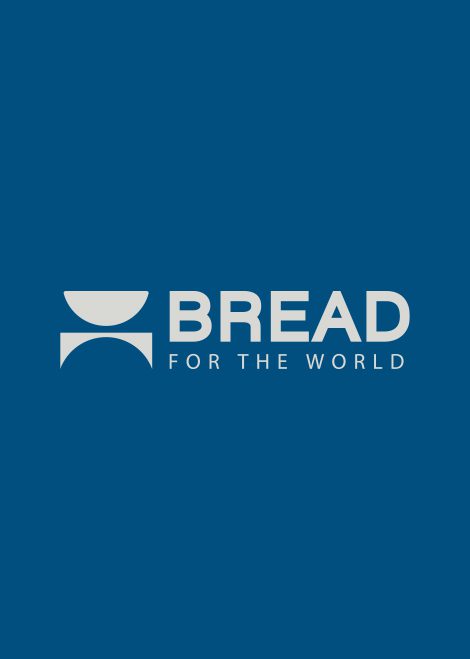Contents
- From the Director
- Wages of Woe: Reflections on Data, Hunger, and Jobs
- Can the World Afford to End Hunger?
- African Successes in Fighting COVID-19
- Racial Equity Is Critical to Containing COVID-19 and Ending Hunger
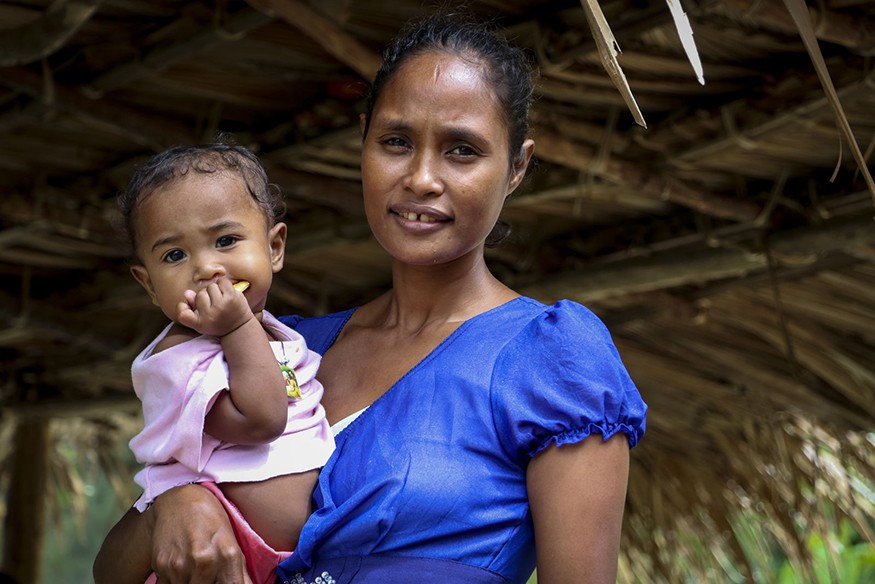
From the Director
Whether you find that 2020 seems to be passing in a blur or lasting at least twice as long as any other year, or something in between, Thanksgiving is almost here. In addition to navigating some combination of work, caring for children, school, efforts to “flatten the curve” of the global pandemic, medical appointments, and more, many anti-hunger advocates have been active in the run-up to the 2020 elections. Many have also been working to support food-insecure people in their communities—including people who suddenly lost their jobs in March or April or, worse, became seriously ill with COVID-19 or lost loved ones to the virus.
In addition to all that, Bread members are continuing their advocacy through the Better Nutrition, Better Tomorrow campaign with its focus on improving child nutrition at home and abroad. As Institute Insights has previously mentioned, experts project that in a matter of months, the COVID-19 pandemic would double the number of people facing hunger crises to 265 million. Many among them are children whose lives are at immediate risk. Anti-hunger advocates are helping to bring this global spike in child malnutrition to the attention of their elected representatives and other decision makers—efforts that are saving the lives of babies and toddlers. We are beyond thankful for all that Institute Insights readers are doing as this difficult and exhausting pandemic era continues.
This issue of Institute Insights looks at a few of the many considerations that shape the immediate future of anti-hunger advocacy. What can we learn from the U.S. hunger situation as it was in 2019, before the pandemic began? What will it really take to achieve Sustainable Development Goal (SDG) 2, ending hunger and all forms of malnutrition, now that COVID-19 has added immensely to the challenges? And, most immediately: What can we learn from COVID-19 success stories from what some might consider unlikely sources—countries in sub-Saharan Africa? And how can U.S. COVID-19 responses be made more racially equitable and effective?
Bread for the World Institute pays attention to evidence and data, often in some detail, with one goal: identifying its potential contributions to progress against hunger and malnutrition. Shaping more effective ways forward is essential if the world is to achieve the SDGs. It is particularly critical now because of the global pandemic, but it has been true all along, from the time the Millennium Development Goals were adopted in 2000 as the predecessors of the SDGs. Work on the Millennium Development Goals continued after their deadline in 2015. Some of the targets had been met, so the SDGs call for further progress. Some were still in progress, and these were incorporated into the SDGs.
People living with hunger and extreme poverty do not and cannot stop trying to make a better life for themselves and their children—certainly not because a deadline set by the global community has passed. Similarly, anti-hunger advocacy and advocates will continue until the goal of ending hunger and all forms of malnutrition is met.
Thank you again to all who have contributed to this effort, particularly during this very difficult time. Wishing you and your families a healthy and happy Thanksgiving!
Asma Lateef is director of Bread for the World Institute.

Wages of Woe: Reflections on Data, Hunger, and Jobs
By Todd Post
There is always a steady stream of research reports on hunger-related topics. I’m a researcher and can hardly keep up with all of them. Very few, frankly, ascend to the level of “must reads,” but one of those that does is the annual Household Food Security in the United States.
Produced by the Economic Research Service of the U.S. Department of Agriculture (USDA), the report provides reliable data on whether hunger is rising or falling in the United States, how different regions and groups are faring, and so forth. We pass this information on to Bread for the World members and they use it in their advocacy.
The 2020 edition, like so many things in 2020, was an exception because of the COVID-19 pandemic. The report was released in early September to a muted response from anti-hunger advocacy organizations such as Bread for the World. Annual research reports are always somewhat out of date because they analyze data for the full preceding year, but usually changes are not dramatic. But as most Institute Insights readers are aware, hunger rates soared in 2020, especially from March through May and especially among children. The 2019 data is not directly relevant to Bread members’ advocacy at this time.
There are, however, some points from Household Food Security in the United States in 2019 that are likely to be important to Bread for the World’s advocacy as a new administration and new Congress begin their work.
About one in 10 households were food insecure in 2019, according to the USDA report. If the country had not reached record levels of food insecurity when the COVID-19 pandemic began, the big news from the report probably would have been that, 12 years after the Great Recession of 2007-2009, food insecurity had finally fallen to its pre-recession levels.
One in 10 food insecure households is certainly preferable to the one in four households reported by surveys conducted in June 2020. But the context is important: One in 10 households were food insecure at a time when the U.S. unemployment rate had fallen to its lowest level in more than 50 years.
These paradoxical statistics on unemployment and food insecurity are worth taking a moment to absorb. A job is supposed to be the optimal solution to hunger. But that statement is a hollow one for the millions of people whose jobs don’t pay a food-secure wage.
Here’s another statistic from the 2019 report, and it is something you see every year: Nearly two out of three food-insecure households have incomes above the poverty line. In other words, food insecurity is not the same thing as poverty, at least as defined by the U.S. government, although millions of people living with poverty are also food insecure.
An initial thought is to increase SNAP benefits, which currently go to households with incomes up to 130 percent of the poverty level. This would help many families in the near term, but it risks diverting attention from the real problem—a problem that is tearing our social fabric and poisoning our politics. That problem is economic inequality.
In Bread for the World Institute’s 2018 Hunger Report, The Jobs Challenge, we agree that a job is the optimal solution to hunger (and poverty), but we also emphasize that it has to be a good job, not just any job. In addition to food-secure wages, it must include essential benefits such as affordable health insurance, a retirement plan, paid sick leave and family leave, and unobstructed rights to collective bargaining.
The United States, and therefore the next president and Congress, faces huge challenges in 2021—everything from containing the COVID-19 pandemic to reviving the economy in ways that are more equitable for everyone. Make no mistake, there was nothing healthy about the 2019 economy if you were paid food-insecure wages.
According to both religious teachings and the social contract between democratic government and individuals, dignity is an essential, top-priority value. A baseline for the dignity of work absolutely must include food-secure wages.
Todd Post is senior researcher, writer, and editor with Bread for the World Institute.
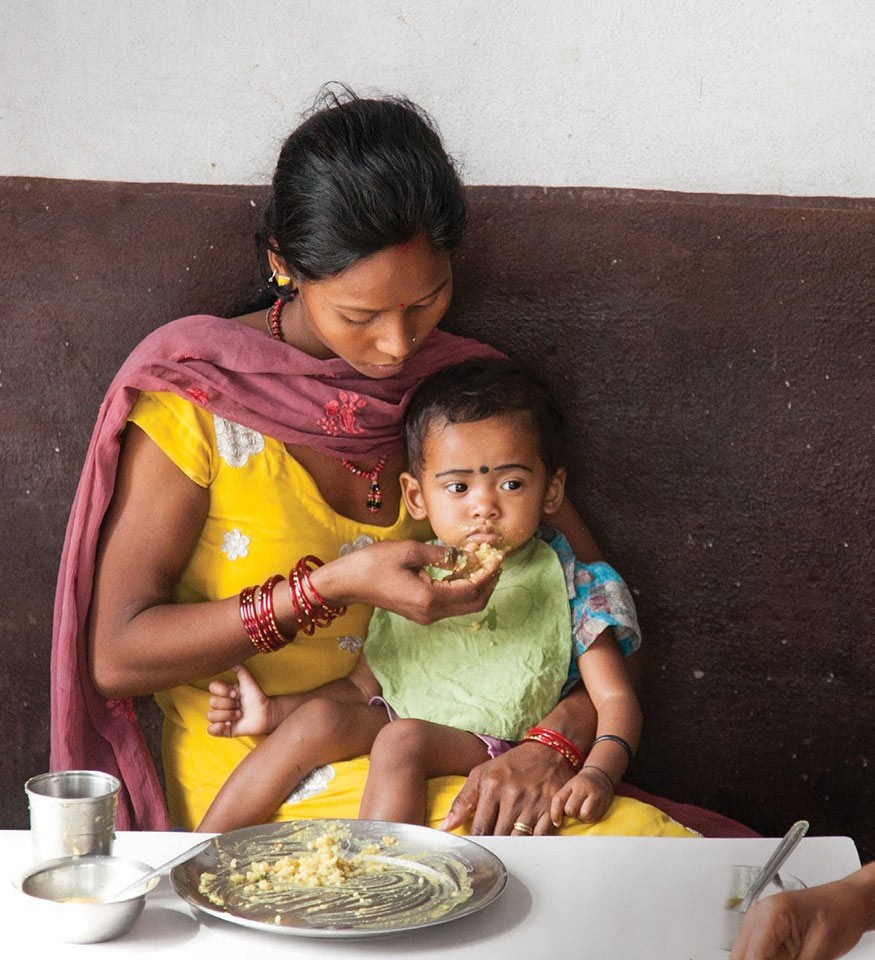
Can the World Afford to End Hunger?
By Tanuja Rastogi, ScD
When people hear that the world has set a goal to end hunger and all forms of malnutrition by 2030, their reaction is often that it’s a nice idea, but obviously it would cost too much. That’s why there are so many people facing hunger today.
Bread for the World and other anti-hunger advocates reply that, in fact, the world can afford to end hunger. It simply hasn’t decided to do so yet. National budgets (and all budgets) can be thought of as moral documents. A country’s true priorities are revealed by how it allocates its resources.
But ending hunger is not a small task. If it were the number one priority, wouldn’t it consume so much of the budget that other essential needs would be crowded out?
Answering this question requires data—and lots of it. An impressive new report by Ceres2030, an international research partnership, looks at how the world can eradicate hunger by 2030. This is Sustainable Development Goal (SDG) 2.
What’s unique about this report is the sheer amount of data and evidence that is included, and the use of a new research tool—an AI (artificial intelligence) machine learning tool. A team of 75 international experts from 23 countries analyzed more than 500,000 reports and articles on food security, agriculture, and food systems from the past 20 years.
They were looking for solutions to three big problems: there are too many people living with hunger (690 million people and rising); poor smallholder farmers suffer disproportionately from hunger; and the food system in place now is damaging the planet and contributing to climate change.
Researchers found that the additional funding needed to end hunger by 2030 is not a small amount: $33 billion per year for the 10 years until 2030. Bread for the World Institute takes no position on where this money should come from. But because it is difficult for people to “process” large numbers in the abstract, the report offers a comparison figure: $1,917 billion per year is spent on armed forces and weapons.
The report proposes that donors contribute an additional $14 billion per year, which would double their current spending, and that low- and middle-income countries working to reduce their rates of hunger and malnutrition contribute the remaining $19 billion per year.
Spending this additional $33 billion per year on ending hunger would have a dramatic impact. The report found that 490 million people would be freed from hunger and the income of 545 million farmers would double, all while maintaining greenhouse gas emissions at the lower levels adopted under the Paris Agreement on climate change. In addition, both small- and large-scale producers in the food sector would benefit from an additional $52 billion in private investment per year.
Priority investments would include seed money to launch new research and development efforts, support for the most marginalized people in societies, better methods of increasing agricultural productivity, and progress on “food on the move,” meaning such areas as preventing food loss and improving processing and distribution.
2020 has been devastating for the world’s poor people. The COVID-19 pandemic shut down economies and disrupted health and food systems. Global projections indicate that the pandemic will push an additional 100 million people into extreme poverty and, as this issue’s Letter from the Director mentions, the number facing crisis levels of hunger will double to 265 million people. This year’s impromptu “test” of the global food system by the COVID-19 pandemic showed that it is failing large numbers of the world’s most vulnerable people.
There is much more to the report than we can discuss here, but it is important to mention that the findings include which actions to reduce hunger have worked and how, as well as why others have not been successful. The report reiterates that there is no one easy panacea that will solve the problem. It emphasizes the importance of cooperation and common purpose among governments, the private sector, and scientists—so that all can work in re-imagined, more effective ways.
Tanuja Rastogi, ScD, is senior global nutrition policy advisor with Bread for the World Institute.
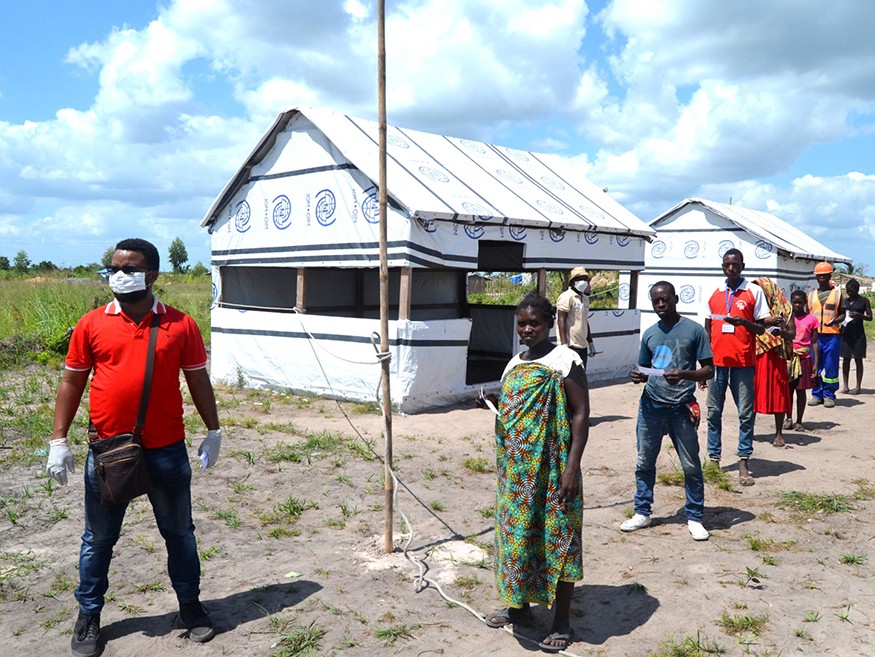
African Successes in Fighting COVID-19
By Jordan Teague and Wubshet Loha
Earlier this year, the world watched uneasily as the African continent recorded its first cases of COVID-19. Many predicted that Africa’s health systems would not be able to handle a steep rise in COVID-19 cases, such as the ones the United States has seen. Observers also projected that the COVID-19 virus would prove to have higher fatality rates in Africa than in other parts of the world.
Analysts got it wrong in several ways. Rather than wait to see if national health systems would in fact be overwhelmed, the African approach could be summed up as prevention, prevention, prevention. As of October 23, the World Health Organization reported 1.7 million cases and 40,000 deaths in sub-Saharan Africa. That is about 4 percent of both cases and deaths worldwide, but Africa has 17 percent of the global population. To be sure, even one case of COVID-19 or death from the virus is too many. It is also true that the continent’s prevention plans have far exceeded expectations.
In sum, many African countries took the virus more seriously than countries in Europe or North America. Given the continent’s repeated exposure to infectious diseases, African countries have developed culturally relevant epidemic coping mechanisms over the years. These coping strategies reinforce the importance of cooperating with public health appeals for behavior change.
An important factor is that previous epidemics provided crucial lessons, local knowledge, and expertise to guide the response to the coronavirus pandemic. When the virus arrived in Africa, many of the countries affected by the 2014 Ebola outbreak in West Africa and the current Ebola outbreak in the Democratic Republic of the Congo brought their isolation centers back into use as a strategy to separate COVID-19 treatment from regular healthcare facilities.
Countries such as Senegal, Uganda, and Nigeria quickly set up COVID task forces at the highest levels of government to put in practice their hard-earned expertise in managing such outbreaks. Perhaps due to more recent memories of dealing with viral outbreaks, public support for the containment measures was quite high, as well; a survey in 18 African countries found that up to 97 percent of people supported various public health safety measures, including staying home from work and wearing a face mask in public.
As Institute Insights has previously noted, restrictive prevention measures can lead to higher rates of hunger and malnutrition. Restrictions on public movement and other containment measures disrupt food supply chains, threaten livelihoods, and increase food prices. They also disrupt vaccination schedules that protect children from childhood diseases that can be deadly, particularly for malnourished children. In countries such as Zimbabwe, South Sudan, and Sudan, food prices continue to increase substantially, driven by tight supplies and disruptions to trade flows and market function, largely caused by COVID-19. Researchers from the International Food Policy Research Institute (IFPRI) reported disruption of food value chains in Ethiopia and elsewhere, impacting the livelihood of farmers and the diet of rural and urban households. South Africa alone has lost an estimated 2.2 million jobs. Projections indicate that impacts stemming from COVID-19 could cause up to 115 million people worldwide to fall into extreme poverty—often accompanied by food insecurity—including 51 million people on the African continent. This would reverse three years of progress in reducing poverty.
If social protection programs—such as unemployment insurance, or cash transfers and food vouchers in times of need—have been put in place, they can be a buffer between people and worsening hunger and malnutrition.
Since March 2020, 24 countries in Africa have spent $5.9 billion on social assistance programs to protect their populations from the worst impacts of the pandemic, which include depletion of savings and assets, loss of livelihoods, and food insecurity, and to alleviate some of the negative impacts of COVID-19 prevention measures. Ghana opted for partial lockdown supported by rigorous contact tracing and monitoring, strengthened behavior change messaging, and the provision of sanitary facilities and free water. Ghana and Rwanda put in place measures to disinfect food markets to ensure that people could access food without risk of exposure to the virus. Rwanda provided sanitary facilities along rural-urban corridors as well, and the government delivered food and non-food items to vulnerable communities. Globally, 212 countries and territories have put in place 1,179 social protection measures since March.
William Haseltine, chair and president of ACCESS International, notes that countries must have “leadership, governance, and public solidarity” to be successful in combating pandemics such as COVID-19. The African continent appears to have all three. John Nkengasong, the director of the Africa Centers for Disease Control and Prevention, convened emergency meetings with African health ministers before even one case of COVID-19 had been confirmed in sub-Saharan Africa. Shortly afterward, the African Union began holding regular meetings to coordinate COVID-19 response on the continent. African Union member states have publicly committed to minimizing food system disruptions and ensuring food security and nutrition for all their citizens—especially the poorest and most vulnerable—during and after the COVID-19 pandemic.
In short, the use of expertise and scientific evidence, quick action by leadership, and general public support for prevention measures seem to have helped the African continent avoid the worst-case scenarios in infection and fatality rates of the pandemic. That does not mean the continent and the world can stand by idly. Because of the economic and other impacts stemming from measures intended to slow transmission and eventually contain the virus, African countries and their partners need to continue to protect their populations not only from contracting COVID-19, but also from falling into poverty, hunger, and malnutrition in the process.
Jordan Teague is senior international policy advisor with Bread for the World Institute. Wubshet Loha is senior global nutrition policy analyst with Bread for the World.
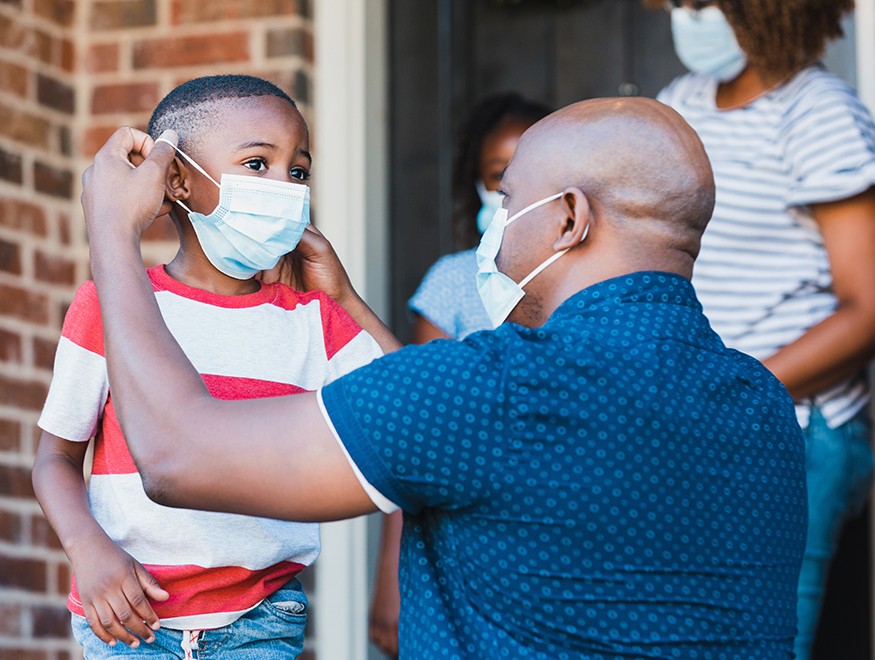
Racial Equity Is Critical to Containing COVID-19 and Ending Hunger
By Marlysa Gamblin
Many folks who have heard me speak about racism in the United States are likely familiar with my analogy of our country being a big family with an unresolved issue. The longer an issue remains unresolved, the more intentional the efforts to resolve it must be. Such problems are likely to worsen in times of crisis.
The Great Depression in the 1930s was marked by deep racial divides in hunger and food insecurity. Structural racism had not been resolved in any way. African American households were at least twice as likely to be hungry as white households. Hunger affected African Americans even more disproportionately after passage of the Social Security Act in 1935, because 65 percent of African Americans were excluded from the legislation’s social protections.
In 2007, just before the Great Recession hit, African Americans were three times as likely as white households to face food insecurity. During the Great Recession, African Americans had the highest hunger rates of any racial or ethnic community.
With structural racism still not addressed in a meaningful way, it is not surprising that the COVID-19 pandemic is another crisis that affects African Americans disproportionately. Black people are more likely to contract the virus and more likely to die if they get sick, and the racial wealth, income, and hunger divides are likely widening now as well.
New Resource
Bread for the World Institute is pleased to announce a new resource, the executive summary of our upcoming report, Racially Equitable Responses to Hunger During COVID-19 and Beyond.
The executive summary focuses on racial equity in immediate responses to the pandemic in the areas of food security, housing security, and income security. The top recommendation is to apply a racial equity lens to all COVID-19-related responses going forward. Racial equity tools such as Bread for the World Institute’s Racial Equity Policy Scorecard can help assess how well an initiative or program is working to dismantle racism.
Following are a selection of other recommendations in the executive summary:
- Recommendation for Food Security: Change the Supplemental Nutrition Assistance Program (SNAP) benefits formula to provide additional support to Black, Indigenous, and Other People of Color (BIPOC) in proportion to how COVID-19 has impacted their households. Currently, SNAP is based only on income. Changing SNAP to account for the impact of racism on households of color will produce equal outcomes in food security.
- Recommendation for Housing Security: Work with states to extend eviction moratoriums for BIPOC households, especially female-headed households, in areas with the highest levels of COVID-19 deaths, economic losses, and food insecurity. Structural racism means that it is harder for families of color to secure housing. Being evicted makes it impossible for a family to shelter in place and therefore increases their likelihood of developing COVID-19 and of dying from it.
- Recommendation for Income Security: Increase stimulus payments to Black, Indigenous, and Other People of Color with the highest rates of COVID-19 infections, deaths, economic losses, and food insecurity in proportion to these racial inequities. Initial stimulus payments did not account for the disparate impacts that unresolved racism has had on households of color during the pandemic. Doing so now would reduce food insecurity and narrow current racial divides.
The executive summary offers more statistics, analysis, and recommendations for action now.
The full report, coming soon, examines, in addition, how to break the cycle of hunger, even during the pandemic, using racial equity approaches. Longer-term recommendations relate to the racial wealth gap, areas of racialized concentrated poverty, and racial bias in the healthcare system.
Marlysa Gamblin is senior domestic policy advisor, racial and gender divides, with Bread for the World Institute.
